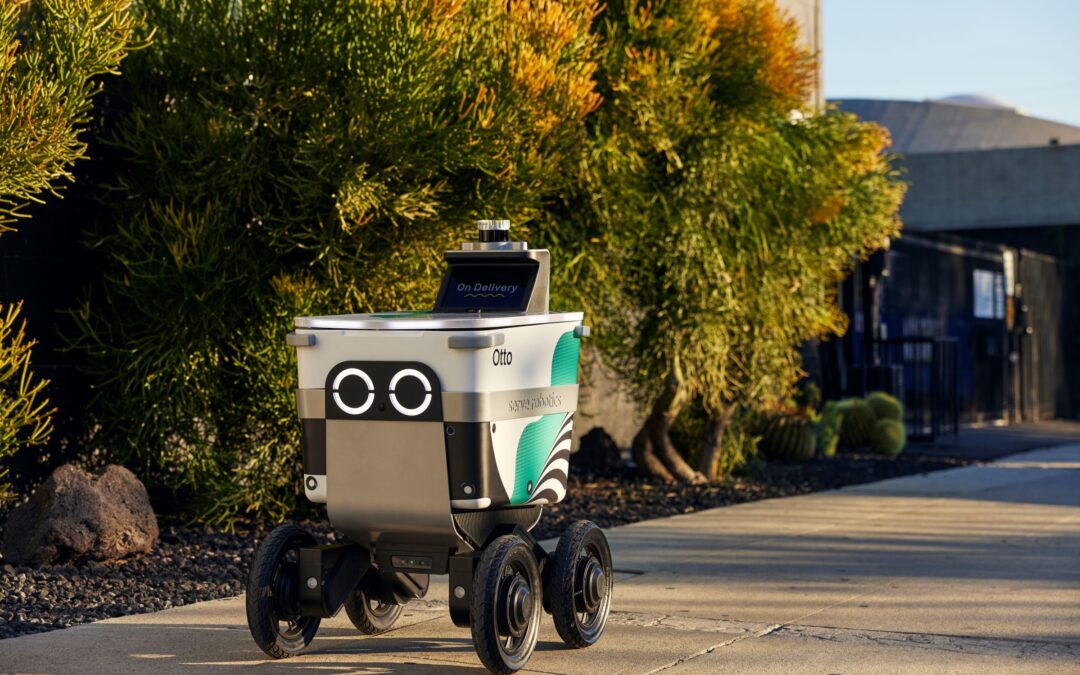A Serve robot can deliver all manner of restaurant items, from burritos to salads, but could it handle an order of $40 million? That is what shareholders delivered to the robotics company last Thursday when the company debuted on the stock exchange. The haul brings the company’s fundraising tally to $93 million since 2021, including $30 million from a reverse merger. The company knows just how it’s going to spend that investment.
“We will be expanding our operation in Los Angeles and we are looking to enter new markets,” said Dr. Ali Kashani, Serve’s co-founder and CEO in an interview.

Co-founder and CEO Dr. Ali Kashani.
Kashani mentions Dallas, San Diego and Vancouver as likely future markets, while being careful to note that nothing is formalized. But he likes what he sees in those cities.
“Those are the top three on our list beyond Los Angeles,” he said. “Dallas makes sense for our partnerships, San Diego is not far from here, and Vancouver is a great city with really dense delivery volume downtown.”
Serve intends to put 2,000 robots on streets in new markets by the end of 2025. It currently has 100 robots serving 300 restaurants in Los Angeles.
It announced today that it has formalized its partnership with Magna International to manufacture these additional robots, which will fulfill its order commitment with partner Uber Eats.
Serve offers several key value propositions. One is safety. It says it’s better to have low-speed, low-emission robots delivering food than people in vehicles. Another is labor savings. Instead of hiring a driver or contracting with a third-party partner to deliver meals, a restaurant can send a robot for last-mile service. And the third is adorability. People just love robots.
“Nobody takes a selfie with a bus or a billboard but they take selfies with robots,” said Kashani.
Right now, Serve is in an early, pre-revenue stage. Serve brought in $207,545 in revenue last year, up from $107,819 in 2022, according to public filings. It’s been in the red the past two years. In robot speak, it is in the beep stage. Beep bop boop will come with greater consumer adoption, which Kashani expects soon.
“We’ve been doing this for more than five years in L.A. There’s been some education to consumers on how these things work and why they need to exist. It’s been a good test as a first market for us. It has let us know this is very much scalable,” he said.
Part of its revenue strategy will include ads on the robots. The plan has created some skepticism from industry observers, but Kashani sees it as a natural extension.
“It’s a revenue opportunity,” he said.
Serve will also have to fend off competitors. Starship Technologies is also in the category and recently raised $90 million of its own. Yet Serve seems well-positioned, says restaurant technology veteran Jim Collins, president of Perfect Company.
“We’re still in the early days with restaurants and robots,” said Collins in an email interview, “but the fact that Serve is capable of delivery without human guidance gives them an edge for now. Others will get there soon. Is this a mass-market solution? Not yet. But I have no doubt that in my lifetime I’ll receive an autonomous delivery of some sort.”
Kashani says Serve will be ready to scale up when adoption fully realizes.
“We’re going to kick into growth mode and start building robots at volume,” he said.




